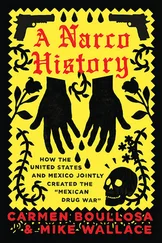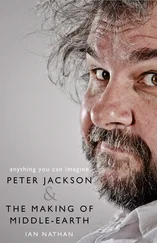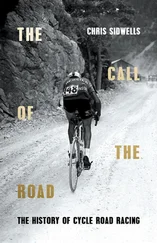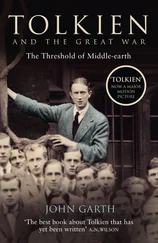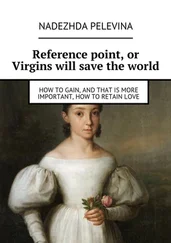And one could say the same of Old King Cole. Tolkien never actually rewrote his saga in epic verse (though one can now see why he remarked casually of Milton, ‘Monsters’, p. 254, that he ‘might have done worse’ than recount ‘the story of Jack and the Beanstalk in noble verse’ – it would have been a monster-poem, like the lost ‘Rescue of Theodoric’). Still, he would certainly have recognised the ‘merry old soul’ as a figure similar in ultimate origin and final ‘vulgarisation’ to King Arthur or King Lear. 8 This interest in the descent of fables probably explains why Tolkien did try his hand at two ‘Man in the Moon’ poems, ‘Why The Man in the Moon Came Down Too Soon’ (which appeared first in 1923 and was collected in The Adventures of Tom Bombadil thirty-nine years after), and ‘The Cat and the Fiddle: A Nursery Rhyme Undone and its Scandalous Secret Unlocked’ (also out first in 1923 but to achieve far wider circulation as sung by Frodo in Book I, chapter 9 of The Fellowship of the Ring , ‘ At the Sign of the Prancing Pony’). No one would call either of these serious poems. But what they do is to provide a narrative and semi-rational frame for the string of totally irrational non-sequiturs which we now call ‘nursery rhymes’. How could ‘the cow jump over the moon’? Well, it might if the Moon were a kind of vehicle parked on the village green while its driver had a drink. How could the Man in the Moon have ‘come by the south And burnt his mouth With eating cold plum porridge’? Well, it doesn’t seem very likely, but perhaps it points to an ancient story of earthly disillusionment. If one assumes a long tradition of ‘idle children’ repeating ‘thoughtless tales’ in increasing confusion, one might think that poems like Tolkien’s were the remote ancestors of the modern rhymes. They are ‘asterisk-poems’, reconstructed like the attributes of Nodens. They also contain, at least in their early versions, hints of mythological significance – the Man in the Moon who fails to drive his chariot while mortals panic and his white horses champ their silver bits and the Sun comes up to overtake him is not totally unlike the Greek myth of Phaethon, who drove the horses of the Sun too close to Earth and scorched it. Finally, the reason why Tolkien picked ‘the Man in the Moon’ for treatment rather than ‘Old King Cole’ or ‘Little Bo-Peep’ is, no doubt, that he knew of the existence of a similar ‘Man in the Moon’ poem, in Middle English and from a time and place in which he took particular interest.
This is the lyric from Harley Manuscript no. 2253, now known generally as ‘The Man in the Moon’. 9 It is perhaps the best medieval English lyric surviving, and certainly one of the hardest, prompting many learned articles and interpretations. However three points about it are clear, and all gave it especial charm for Tolkien. In the first place it is extremely bizarre; it is presented as a speech by an English villager about the Man in the Moon, asking why he doesn’t come down or move. It also has a very sharp and professional eye for English landscape; the villager concludes that the Man in the Moon is so stiff because he has been caught stealing thorns and carrying them home to mend his hedges with (an old image of the Moon’s markings is of a man with a lamp, a dog, and a thorn bush, see Starveling in A Midsummer Night’s Dream V i). Finally, for all the poem’s thick dialect and involvement with peasant life, it is full of self-confidence. ‘Never mind if the hayward has caught you pinching thorns’, calls the narrator to the Man in the Moon, ‘we’ll deal with that. We’ll ask him home’:
‘Drynke to hym deorly of fol god bous,
Ant oure dame douse shal sitten hym by.
When that he is dronke ase a dreynt mous,
Thenne we schule borewe the wed ate bayly.’
‘We’ll drink to him like friends in excellent booze,
and our sweet lady will sit right next to him.
When he’s as drunk as a drowned mouse,
we’ll go to the bailiff and redeem your pledge.’
And without this evidence, clearly, the indictment will be quashed! It all sounds a most plausible way to work, and one which casts an unexpected light on the downtrodden serfs of medieval England – not as downtrodden as all that, obviously. Their good-natured resourcefulness seems to be an element in the make-up of Tolkien’s hobbits. More significantly, the poem makes one wonder about the unofficial elements of early literary culture. Were there other ‘Man in the Moon’ poems? Was there a whole genre of sophisticated play on folk-belief? There could have been. Tolkien’s 1923 poems attempt to revive it, or invent it, fitting into the gaps between modern doggerel and medieval lyric, creating something that might have existed and would, if it had, account for the jumble and litter of later periods – very like Gothic and ‘i-mutation’.
One sees that the thing which attracted Tolkien most was darkness: the blank spaces, much bigger than most people realise, on the literary and historical map, especially those after the Romans left in AD 419, or after Harold died at Hastings in 1066. The post-Roman era produced ‘King Arthur’, to whose cycle King Lear and King Cole and the rest became eventual tributaries. Tolkien knew this tradition well and used it for Farmer Giles of Ham (published 1949, but written much earlier), the opening paragraphs of which play jokingly with the first few lines of Sir Gawain. However he also knew that whatever the author of Sir Gawain thought, the Arthurian tradition was originally non-English, indeed dedicated to the overthrow of England; its commemoration in English verse was merely a final consequence of the stamping-out of native culture after Hastings, a literary ‘defoliation’ which had also led to the meaninglessness of English names like ‘Fawler’ and the near-total loss of all Old English heroic tradition, apart from Beowulf. What, then, had happened to England and the English during those ‘Norman centuries’ when, it might be said, ‘language’ and ‘literature’ had first and lastingly separated?
Tolkien had been interested in that question for some time. Not much was known about Early Middle English, and indeed several of its major texts remain without satisfactory editions today. However, one important work was evidently the Ancrene Wisse , a ‘guide for anchoresses (or female hermits)’, existing in several manuscripts from different times and places, but one of few Middle English works to be translated into French rather than out of it. With this were associated several other texts with a ‘feminist’ bias, the tract on virginity Hali Meiðhad , the saints’ lives Seinte Juliene , Seinte Marherete , Seinte Katherine , the little allegory Sawles Warde. All looked similar in dialect, and in sophistication of phrase; on the other hand their subject-matter meant they were unlikely ever to take the ‘literature’ side by storm. What could be said about them?
Tolkien began with a review of F. J. Furnivall’s edition of Hali Meiðhad , in 1923; he went on to make ‘Some Contributions to Middle English Lexicography’ in Review of English Studies (1925), most of them drawn from Ancrene Wisse , and some of them incidentally interesting, like the remark that medi wið wicchen must mean, not ‘meddle with witches’ but ‘bribe, purchase the service of witches’, apparently a known practice to the author of the ‘Rule’. In ‘The Devil’s Coach-Horses’ in the same periodical that year he spent enormous effort on the single word eaueres from Hali Meiðhad , arguing that it did not mean ‘boars’ as the OED had said, but ‘heavy horses, draft horses’. Philologically this was interesting as showing a Germanic root *abra-z , meaning ‘work’ and connected with Latin opus. Mythologically it was interesting too as showing an image of the devil galloping away not on fire-breathing steeds, but on ‘heavy old dobbins’ – a contemptuous barnyard image of evil. All very well, but still, some would have said, distinctly peripheral.
Читать дальше

